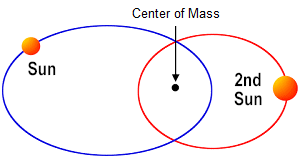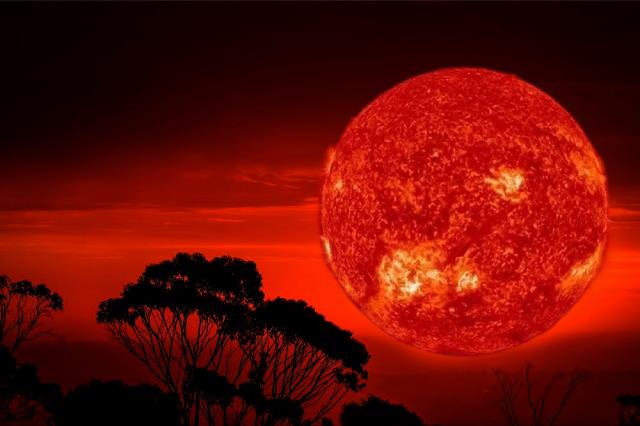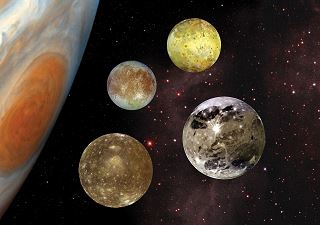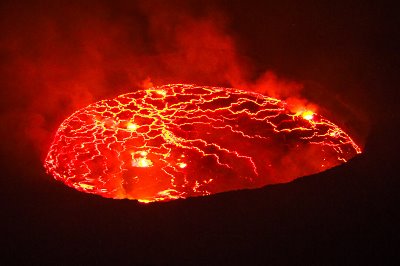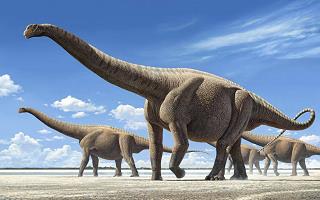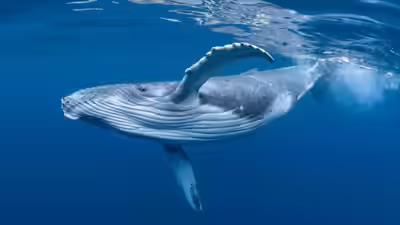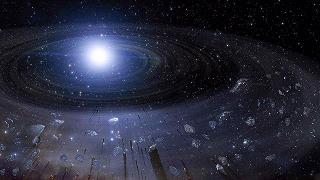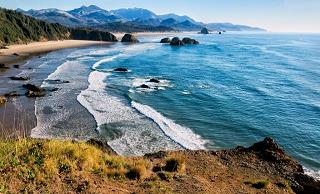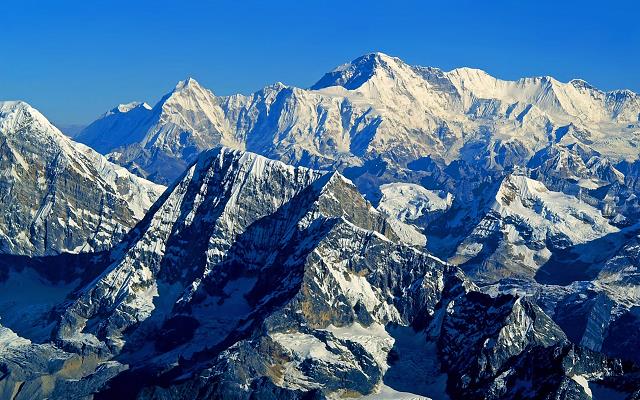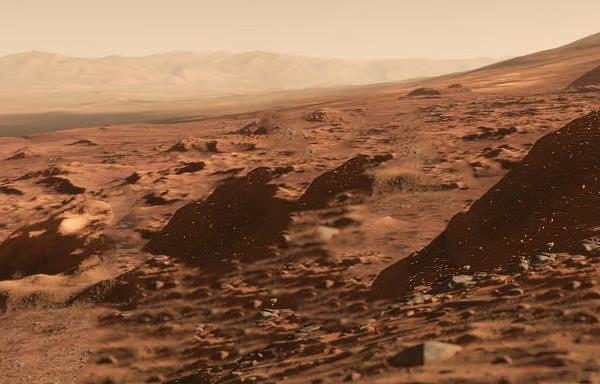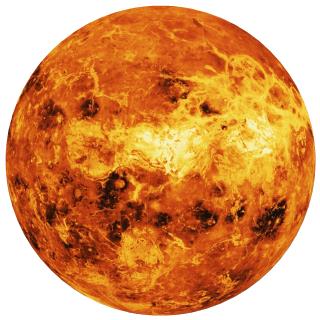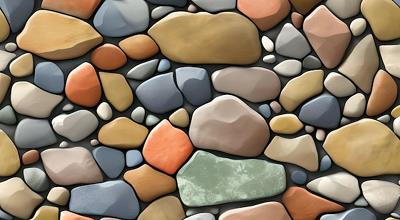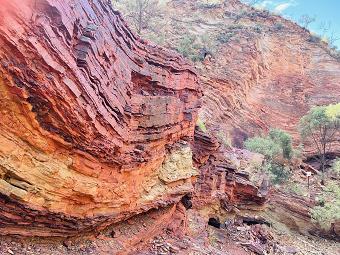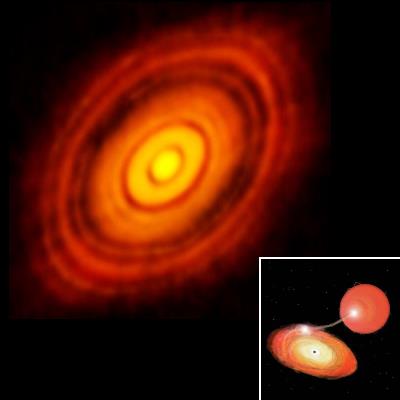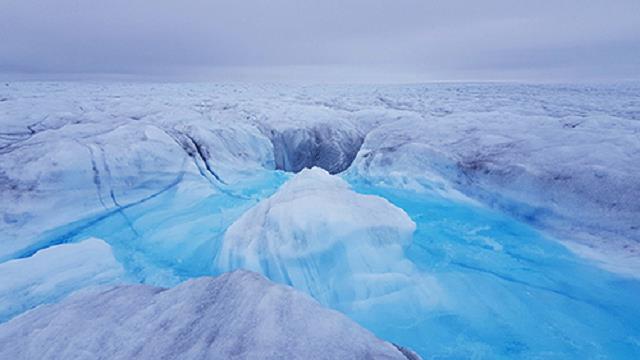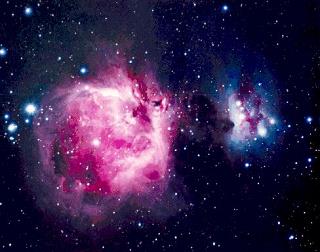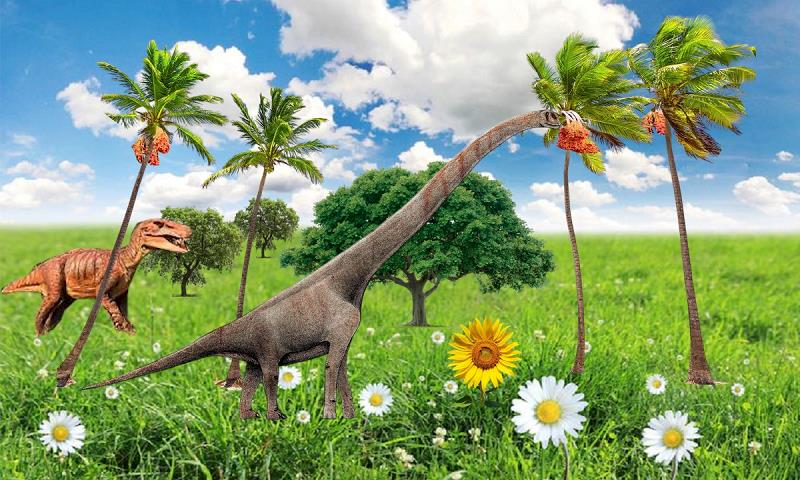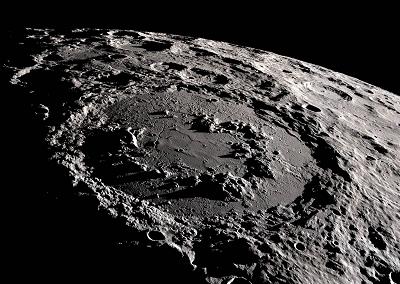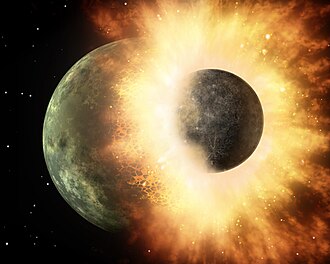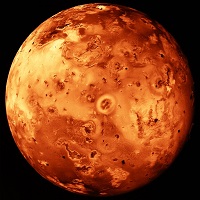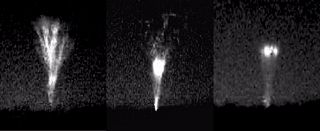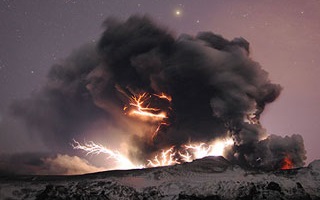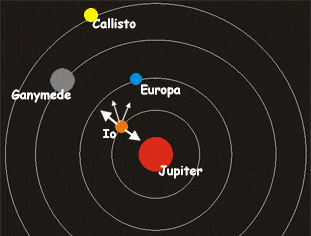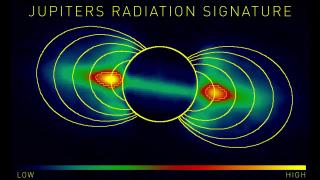

| The Second Sun |
A study shows that there was a second sun (star) in the solar system used to orbit in the asteroid belt, between Mars and Jupiter, around 200 million years ago.
Published: January 15, 2014
Last Updated: September 10, 2019
 |
Scroll down
|
|
|
The full report in a single page |
|
|
The report by parts (toc, overview, etc. in separate pages) |
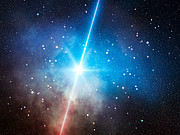 |
Cosmic rays cause earthquakes |
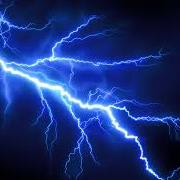 |
What Causes Lightning Strikes? |
 |
Facebook Timeline |
External links open in a new tab.

Last Updated: August 14, 2025
| It started orbiting the existing sun after losing the most of its mass |
 |
| The asteroid belt is a sign of a second sun |
 |
|
Space observations have shown that the source of debris disks is a companion dying star. So if there were no companion star (second sun) in the solar system, the asteroid belt wouldn't have existed. It is true that the asteroid belt doesn't look exactly the same as the new disks that are currently forming, the reason is that it is a very old disk, lost at least 99% of the material it initially had. The common assumption is that the asteroid belt is a leftover material from the formation of the solar system, based on the idea of the Nebular theory, but is this theory correct? "NASA Mission Suggests Sun and Planets Constructed Differently" The system to the right above is called an X-ray binary because of the X-rays emitted by the central star as material accumulates in the debris disk of the companion star. The X-rays are not the cause of the companion star's collapse; rather, the collapse is due to the star's own evolution and aging. On the other hand, gravitational interactions between the two stars in a binary system can prevent the collapsing star from expanding into a red giant. The central star's gravity can strip away the companion's outer layers, causing it to form a debris disk instead of expanding into a red giant. |
| Why is Mars smaller than Earth? |
 |
|
The moon was originally the first planet next to the sun. Based on the arrangement of the inner (terrestrial) planets, we see that the closer the planet is to the Sun, the smaller it is, and the further it is away, the bigger it is. Mars is the farthest from the Sun, so it should be bigger than Earth, but it is smaller; it is about half the size of Earth. It is the second sun that prevented Mars from having the size that is supposed to have. A star's radiation causes a planet to shrink. This process is called photoevaporation; it is an observed fact. By simply examining the sizes of the planets orbiting the Sun, from Mercury to Mars, it can be seen that the so-called "photoevaporation" process was in action at the time of the solar system's formation. The closer a planet is to the Sun, the smaller it is. If it weren't for the second sun, Mars would have been bigger than Earth. |
| The Gas Planets | ||||||||||||||||||||||||||||||||||||
 | ||||||||||||||||||||||||||||||||||||
 | ||||||||||||||||||||||||||||||||||||
|
Unlike the inner planets, the sizes of the gas planets are in reverse order. The gas planet that is closer to the Sun, the bigger it is; not just bigger, but too much bigger. Jupiter has a mass of about 317 times the mass of Earth. Jupiter's Great Red Spot itself is so big that three Earths would fit in it easily. Saturn's mass is about 95 times the mass of Earth. Gases from the dying second sun attracted to gas planets and increased their mass and gas volume. Heat Transfer
 What happens if you boil water on fire? You see the water vapor goes to the ceiling; and if the ceiling is divided into two parts, one part is cold and the other is hot, you will see most of the water vapor goes to the cold part. The second law of thermodynamics explains this process as follows: heat flows spontaneously from a hot to a cold body.
The second sun, by the end of its life, failed to burn fuel and convert it to light; so where do you think the hot fuel will go? To the cold body! And that is exactly what happened. Some of the remaining fuel, rust and dust were attracted to the inner planets due to gravity, but the most have gone to the cold bodies, Jupiter and Saturn, so their size and mass increased greatly; Uranus and Neptune were not affected that much because they are very far away from the asteroid belt, the final orbit of the second sun. Jupiter was the smallest gas planet, Neptune was the biggest
 The planet that is closer to the sun must be smaller, because of the heat and other radiations from the sun, even if it is a gas planet, unless an extra mass or volume was added to the planet at a late time to make it bigger than it should be.
Uranus is bigger than Neptune in diameter (4.01 > 3.88), but smaller in mass (14.5 < 17.1). It is not following the size and mass sequence of the gas planets (bigger diameter and bigger mass). Something abnormal must have taken place in the planet's history that altered its size or mass. The size and mass mismatch of Uranus shows that the original composition of the planet has been changed. The direction of change started from Jupiter toward the outside of the solar system, otherwise the diameter of Neptune would have been bigger. By following the direction of change we see that Uranus was originally, before the collapse of the second sun, smaller than Neptune, Saturn was smaller than Uranus, and Jupiter was the smallest gas planet, as shown in the picture above. Heavy gases and solid materials accumulated in planets closer to the source, whereas light gases traveled farther. When the light gases reached Uranus, they were attracted by the planet. They enlarged the planet's size, but didn't affect its mass that much. |
| The sun's brightness increased |
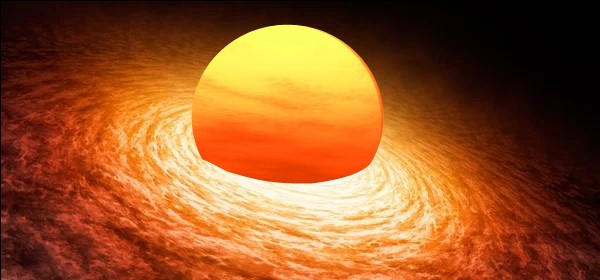 |
|
A great amount of the matter from the second sun must have fallen into the sun due to its
immense gravity. The sun's size and mass increased.
The mass transfer is observable with current technologies. Theoretically, it gives the other star more energy, and therefore brightness (luminosity). The matter from the companion star is distributed between all the objects in the system, depending on the object's gravity and place, whether it is a hot or a cold place, near or distant. The sun is the most massive object in the solar system, with the strongest gravitational pull, so it must have taken most of the matter. The attracted matter was reused by the sun, specifically hydrogen and helium. As a result, the sun became a more powerful star. |
| Planets of the second sun: currently moons of Jupiter and Saturn |
 |
 |
| Because the second sun was larger than the current sun, it generated greater heat and stronger gravitational force. Gravity pulled the planets of the second sun into closer orbits, in an extremely hot environment, making them relatively smaller than the planets of the sun. |
|
Not all moons are the same: some have the exact
same features as planets, like the Earth's moon; while others are simply stones,
like the moons of Mars.
The total number of planet-like moons in the solar system is six, the Earth's moon is one of them, the other five used to be planets of the second sun, four of them are orbiting Jupiter now (Europa, Io, Callisto, Ganymede), and one moon is orbiting Saturn, the moon Titan. The moon of Jupiter Io has over 400 "active" volcanoes, it is the most volcanically active space object in the solar system. These moons have spherical shape, mountains, lowlands, highlands and a mantle; what else do they need to be classified as planets? To orbit a star? That is the only thing they are missing now. |
| The Initial Layout |

|
|
The solar system might have been in this layout when the second sun was
fully functioning, in a binary star system, each sun has five planets.
One sun sets, another sun rises

Earth in a binary system
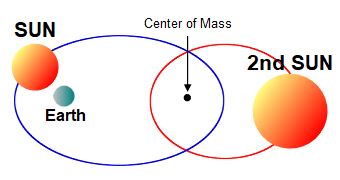 |
| Why is Mars Red? |
 |
| Because the surface of Mars is rich in iron oxide (rust).
Iron oxide is a product of dying stars.
The last element produced by dying stars is iron (Fe), and then this iron is combined with H2O water vapor, which is also produced by the dying star. H2O makes the iron to rust. This kind of rust can be found on Earth now in many deserts around the world.  The percentage of rust on the surface of the inner planets is not well studied, so the numbers shown in the figure above are approximate. Generally the inner planet that is closer to the asteroid belt, the more percentage of rust it has on its surface, and as we move away from Mars toward Mercury, the amount of rust decreases. This shows that the source of rust was very close to Mars; it is from the other side between Mars and Jupiter.  The moon also has iron oxide! How is it possible for the rust to form on the moon without water? The rust on the moon is not caused by oxygen traveling from Earth to the moon, as assumed, but it was "deposited" on the surface of the moon readymade from factory, 200 mya, which is also the case for all of other planets. |
| Solar wind destroyed the atmosphere of Mars |
 |
| The atmosphere
of Mars is less than 1% of Earth's. The solar wind of the second sun destroyed the
atmosphere of Mars, just like what the solar wind of the existing sun has
done to the atmosphere of Mercury and that of the moon when the moon was the
first planet next to the sun.
The common belief is that solar wind from the existing sun is the one that destroyed the atmosphere of Mars, on the the assumption that the early sun had a stronger solar wind. A recent study has shown that the effect of the solar wind from the sun on Mars' atmosphere is negligible, even if the early sun had a stronger solar wind: Mars' atmosphere well protected from the solar wind So there must have been another solar wind, from another sun, very close to Mars, and very strong, burned the planet's atmosphere from top to bottom. |
| No metals on Earth 200 mya | |||
 |
|||
|
The Earth had no metal at all before 200 million years, not even inside the Earth's internal layers. The Earth's inner core, which is thought to be made of iron and nickel, isn't as old as the Earth itself, but it is an added part at a very late time, and it is getting bigger. Some scientists give it an age of about 500 million years only, compared to the Earth's estimated age of about 4 billion years. Large dying stars create chemical elements, including metals such as iron, magnesium, and gold. All the metals on Earth came from the second sun, in addition to the basalt rocks. At the end of life of the second sun, the generated gamma rays in the nuclear reactions of the star were not converted to light or any other form of energy, but went out of the star directly, hitting all nearby objects. These powerful rays have hit the earth and the other inner planets directly. They interacted with, and ionized, gases inside the earth's internal layers. Ionized gases expand. The expansion caused the earth's crust to open up in some places to release pressure, in a similar manner to lava lakes releasing mantle over-pressure. The open areas however must have been much greater and deeper than lava lakes at the present time. Rocks from the second sun have fallen from the sky and entered the earths' internal layers from the open areas. The rocks melted and released their metal. The released metal concentrated in the center of the earth and started forming the inner core. The melted rocks are still releasing metal now, so the inner core of Earth is getting bigger. The low gravity of Earth 200 mya enabled dinosaurs to grow to enormous sizes. Some discovered dinosaur fossils indicate that they weighed about 150 tons, and a length of more than 30 meters (98 feet), compared to the African bush elephant, the heaviest land animal living today, which reaches a maximum weight of about 10 tons only. The Boeing 737-800 airplane ✈ has a maximum takeoff weight of 65 tons. Gravity affects the size of living things The Blue Whale can be 30m long and weigh about 190,000kg (209 tons). This marine animal, and the like, takes advantage of buoyancy in water, which counteracts gravity, so it grows to a massive size. Theories that rule out gravity as a factor in dinosaur size are based on the assumption that the Earth has remained unchanged since the time of its formation. It is thought that dying stars do not produce solid materials, rocks and metal asteroids, but observations of dying stars elsewhere in space have shown rocks and metals orbiting dying stars. These solid materials are products of the dying stars themselves, and not of nearby destroyed planets, as assumed. Not all stars are the same. Some maybe destroying planets, but not all. How do dying stars produce solid materials?
Example: Small moons currently form around Saturn from the dust particles that are in the rings of the planet. The particles orbit the planet, collide with each other, and stick together to form larger objects. The dust particles and gases in the disk of dying stars orbit the stars themselves initially. They form larger objects in a similar way that the small moons form around Saturn. If the density of particles is high, which is the case in the particles of dying stars, plus the gravity of the stars, large objects form very quickly. Explosions in dying stars push the dust particles that were produced by their nuclear reactions over some distance. The powerful gravitational force of dying stars pulls together the molten particles that were pushed away, compressing them to form rocks and metallic asteroids. The second sun in its final days became like a nuclear reactor creating chemical atoms. It created all kinds of chemical elements, including hydrogen and oxygen. These two elements combined to form H2O water vapor. This water vapor became frozen in space, some of which was attracted to the inner planets due to gravity, and then fell on them as ice asteroids. Most of it has gone to the gas planets. On Earth, these ice asteroids created oceans. There were no oceans on Earth before 200 million years. The idea of a single large body of water surrounding a supercontinent is theoretical without any supporting physical evidence; no part of a seafloor of the supposed large ocean has been found anywhere on Earth.
"Scientists use the magnetic polarity of the sea floor to determine the age.
Very little of the sea floor is older than 150 million years."
(sos.noaa.gov)

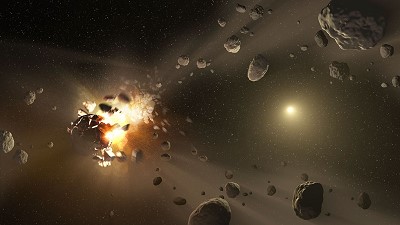
Magnetic Field
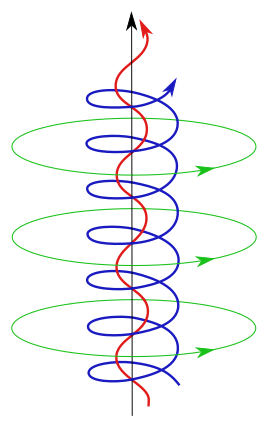 Ionized gases create a magnetic field The high-pressure gases that opened up the Earth's crust were initially ionized by gamma rays from the second sun. Ionized gases (plasma) create a magnetic field. The magnetic field created by large volumes of ionized gases can extend to outside the Earth's atmosphere into space. Since basalt rocks are rich in iron and magnesium, they were attracted by the magnetic field generated by the ionized gases in the open areas in the Earth's crust; the same is true for the open areas in the other planets. The rocks fell in the open areas, where the magnetic field is high, more than in the areas where the crust remained intact. The rocks melted in the mantle and were recycled to form the ocean floor on Earth and the lowlands on the other planets.  As a result of the added material, Earth expanded. The Earth expanded once only, and not continuously expanding as suggested by The Expanding Earth Theory. Mars Expanded
 Not just the Earth, the other inner planets have also expanded. The lowlands (blue) on the other planets, which are equivalent to the ocean floor on Earth, are added parts. All lowlands, in all planets, are younger in age than the highlands. Mars Lowlands Younger than the Highlands — According to the crater counting technique, the surface of a planet with less craters must be younger than the surface on the same planet with more craters. Mars lowland is much smoother than the highland, with very few craters, which shows that Mars has expanded; not "resurfaced", as assumed.
"The Southern Highlands [of Mars] are older than the Northern Lowlands, based on the larger number of impact
craters seen to cover the region. Craters of 50 km in diameter are common in this area and have
usually suffered from erosion, indicating they were formed during ancient times."
(esa.int)
The moon's lowlands
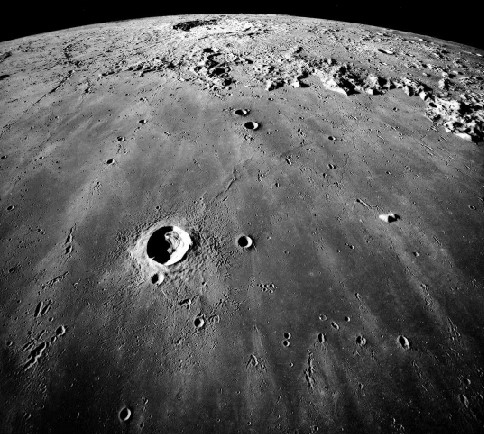 The hypothesis Major Resurfacing Event is just a suggestion without any supporting evidence whatsoever. It does not explain how this global surface formation can happen in a short geological time or the force behind it. Volcanism is thought of as a possible mechanism, but the number of volcanic craters on the formed areas isn't many to produce lava flows that cover all of these areas. The planets expanded. All of these lowlands are new, not resurfaced, added to the planets at a late time, in the same way the ocean floor was added to Earth, and all of them are no older than 200 million years, just like the ocean floor on Earth.
Most of the frozen waters deposited on Mars, in the form of ice asteroids, have melted, and then evaporated to space, because of the thin atmosphere of the planet, but Earth preserved the received water. The water covered the whole planet Earth. Traces of this water can be found now all over the Earth's landmass, but the assumption is that the traces are of ancient oceans. There is no difference between the assumed ancient oceans on Earth and those that have supposedly existed on Mars in ancient times. The traces of water in these two planets are not of real oceans, but of a large volume of water has fallen as ice asteroids from the sky, melted, stayed temporary in some areas, and then shifted place gradually over millions of years, but on Mars, it has evaporated into space, because of the thin atmosphere of the planet, it is less than 1% of the Earth's atmosphere. "Venus, unlike Earth and Mars, has an electric field with a potential of about 10 volts. When water molecules reach the upper atmosphere and are broken down into hydrogen and oxygen ions, the electric field carries away the oxygen ions into space. Even more than the interaction with the solar wind, this «electric wind» could have played a major role in stripping Venus of its water." (britannica.com) Mercury and the Moon have water ice on certain parts of their surfaces, which suggests that both planets were once covered in water from the second sun, but evaporated into space due to the lack of an atmosphere. |
| Banded Iron Formations (BIFs) | ||
 |
||
|
BIFs are layers of iron oxide (rust) in old sandstone terrains and mountains, which are the mountains that formed before the breakup of the Earth's landmass 200 mya. BIFs can be found now all over the world, which indicates that their formation was a global event. The name suggests that BIFs are made only of iron, because it is the dominant element, otherwise they contain all kinds of metals: iron, silica, magnesium, copper, gold, silver, etc. Any radiometric dating assigned to BIFs is unreliable and subject to change. For example, BIFs in Western Australia were previously assigned an age of 2.4 billion years. In 2024, the age was revised to 1.4 billion years. A difference of 1000 million years! A billion-year shift in the formation of Earth's largest ore deposits If this is happening with the biggest iron source in the world, what could it be like with isolated rocks of unknown origin? All rocks on Earth are susceptible to contamination through water-rock interaction, a well-known phenomenon, water deposits minerals in rocks and alters their composition. So, the presence of a metal in a rock, does not necessarily suggest the rock initially had it since the time the rock formed. BIFs also formed through water-rock interactions. All of the ages assigned to BIFs are theoretical, based on the assumption that Earth had metals since the time of formation. There is no direct radiometric dating method for metals. The source of BIF is controversial BIFs are thought to have formed in sea water at a depth of 200 meters, on the assumption that the source of BIFs is the ocean. However, The ocean is not generally accepted as the source of BIFs: "The origin of banded iron formation is not clearly understood." (britannica.com) The reason why the source of BIF is a controversial topic is that iron is a heavy element; it cannot be transported easily in solution from one place to another over the surface of Earth to finally make a solid form of iron minerals in a remote place. "So far, it still remains controversial with regard to sources and pathways of iron (Fe) and silicon (Si) within BIFs." (sciencedirect.com) The only confirmed thing about BIF is that it formed under water containing large amounts of metals. The source of that water is the debris disk of the second sun. The water fell from the sky and formed BIF through a process that lasted thousands of years. The water was in the form of ice asteroids. The Earth's landmass must have been frozen at that time for BIFs to form. BIFs formed in the areas where the asteroids initially fell. The ice asteroids accumulated on each other, forming a very large ice mass, perhaps comparable in mass to the ice sheets at the poles, on sandstone mountains, and the surrounding areas. The scenario in the following steps might have occurred next: Banded Iron Formation
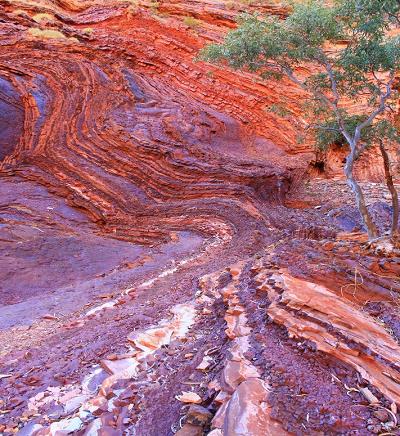 BIF Layers
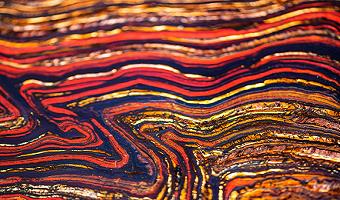
The melting process in the Greenland Ice Sheet shows the natural possibility of ice melting from the bottom due to heat coming from the mantle. The iron oxide (rust) in BIFs is not a result of an oxidation process of iron on Earth, as theories suggest, but it has already been oxidized from the source before arriving on Earth, just like the rust on Mars and the moon. |
| The initial size and composition of the planets | ||
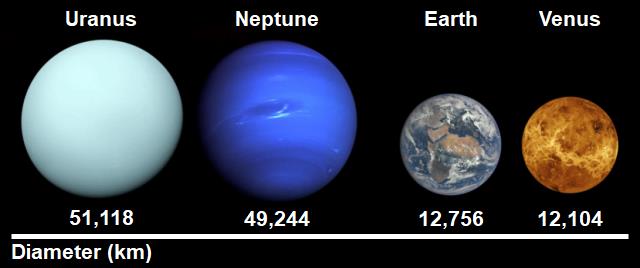
|
||
|
The similar size of Uranus and Neptune suggests that all of the gas planets were initially the same size. The internal structure of all the gas planets is theoretical, subject to change, so it can be ignored. The atmospheres of Uranus and Neptune are very similar. Both atmospheres are composed mainly of hydrogen and helium, suggesting that all of the gas planets were initially made of exactly the same gas composition. Being the farthest from the sun, Uranus and Neptune retained most of their original characteristics. The similarity in size of Earth and Venus also suggests that all of the inner planets were initially the same size, made of gases like Neptune and Uranus, but their proximity to the sun caused them to shrink and solidify.. Because they are closer together at the center of the inner planets, Earth and Venus were affected by the sun and the second sun in roughly equal proportions. Venus is closer to the sun, so it became slightly smaller than Earth. Sun's Radiations
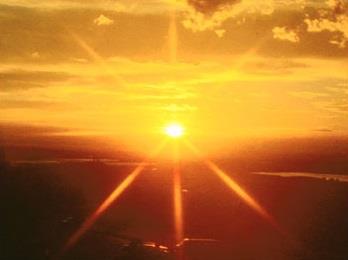 Radiations from the sun and the second sun: ionizing radiation creates chemical compounds, and ultraviolet radiation causes chemical reactions, plus solar wind, heating, cooling, and atmospheric circulation, caused the inner planets' gases to form liquid compounds and solid particles, which over millions of years transformed the planets from gaseous to terrestrial. The process is a cumulative; one mixture produces another, another produces a different mixture, and so on. A small amount of water formed during the transformation process, allowing the early Earth to support a limited form of life. The Nebular hypothesis suggests that dust particles in the observed clouds in space (interstellar medium) rotate in a disk, stick together, and form planets. This idea may not be correct, because the amount of dust is very small; it is less than 1%. When the hypothesis was formulated in the 18th century, the composition of the interstellar cloud was unknown, so the idea of dust particles sticking together and forming planets was more acceptable. But now, after the cloud's composition has become known, the idea doesn't seem logical to many. Newborn stars don't have enough dust to build planets. What are the missing ingredients?
|
| The Moon: The first planet next to the sun |
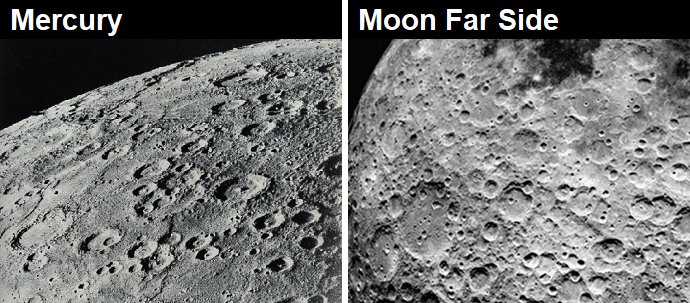 |
|
Mercury's surface is gray and heavily cratered. It is very similar to the surface of the moon. This indicates that both bodies share a history of violent collisions with asteroids and comets, suggesting that both formed under similar harsh conditions, and lived in these conditions for a very long time. The atmosphere of the moon is almost of a zero thickness, just like the atmosphere of Mercury. The solar wind is the only known factor to burn the atmosphere of planets. So the moon must have been in a position very close to the sun in order for solar wind from the sun to destroy its atmosphere. Asteroid impact: The South Pole-Aitken basin is an immense impact crater on the far side of the moon. It has a diameter of about 2500 kilometers. "It is the largest, oldest, and deepest basin recognized on the Moon." (wikipedia.org) This massive asteroid impact could be the one that knocked the moon out of its orbit around the sun, to finally settle into an orbit around Earth. The moon has all the features needed to be classified as a planet; it has a spherical shape, lowlands, highlands and a mantle. It used to have volcanoes, indicating that it had gases and liquids inside its mantle. Since it is the smallest "planet," then it has be the first from the sun. The Giant Impact is the dominant hypothesis for the formation of the moon. It suggests that a Mars-sized body named "Theia" impacted the early Earth, creating a debris disk around Earth, and the moon then formed from this disk. The hypothesis was initially formulated in the 19th century. When some rocks were brought from the moon in the 60s, some scientists who adopted the hypothesis decided to analyze isotopes from the rocks. The isotopes were checked and found similar to Earth's isotopes. If the isotopes are similar, it suggests that the two celestial bodies may have formed from similar materials or under similar conditions. However, the isotopes were found to be dissimilar when analyzed recently using a high-precision technique. New Study Shows the Earth and Moon are not so Similar After All
Earth Rocks and Moon Rocks Are More Different Than We Thought The study revealed that the Moon has higher oxygen isotope values, suggesting a distinct origin or history for the materials that formed the Moon. The isotopes were used as the only factors to prove the hypothesis. The Mars-sized body (Theia), the collision, and the debris disk are all imaginary. |
| The Permian - Triassic Extinction Event |
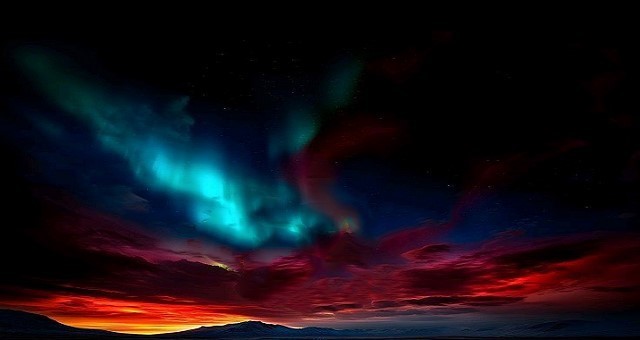 |
"It was almost the perfect crime. Some perpetrator -- or perpetrators --
committed murder on a scale unequaled in the history of the world. They left
few clues to their identity, and they buried all the evidence under layers
and layers of earth. The case has gone unsolved for years -- 250 million
years, that is."
(science.nasa.gov)
This mass extinction was caused by the dying second sun, it took the Earth 30 million years to recover. The long lasting period of the extinction shows that the cause was present all of this time. |
| Volcanism all over the world |
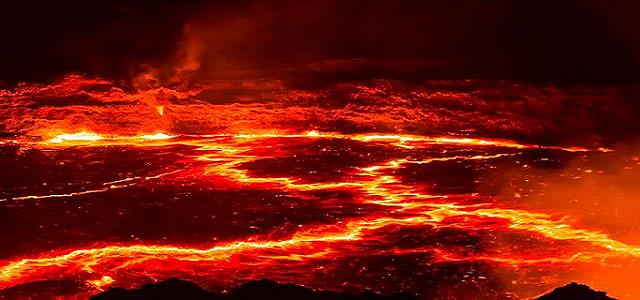 |
|
"The Earth was engulfed in widespread volcanism at the time of
the extinction" Volcanism wasn't the only event to happen during the extinction 200 mya, but other major events have also taken place at the same time: mountains were rising, the ocean floor was forming, the continents started to drift, and the earth was taking a completely different shape. How to explain all of this happening simultaneously? There must be one factor only that caused this combination to happen together. |
| Cosmic rays cause earthquakes |
 |
|
Earthquakes are currently attributed to earth plates moving and clashing with each other. The movement of earth plates is a result, not a cause. 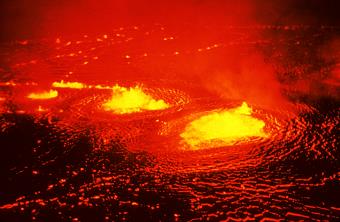 The dying second sun emitted powerful gamma rays that left the entire Earth in a state of burning for a long period of time, because it was a very close star.
Gamma rays fired by distant dying stars cause a much less damage: destructive earthquakes, tsunamis, and volcanic eruptions. These cosmic rays penetrate to the earth's mantle in areas where the basalt layer is very thin. They interact with, and ionize, gases and liquids in the mantle causing these substances to expand. The expansion moves tectonic plates abnormally leading to an earthquake. If the earthquake occurs in the sea, it will cause a tsunami. When this topic was posted on facebook in 2015, many people didn't agree. New studies dated 2023/24 showed a strong correlation between cosmic rays and earthquakes. |

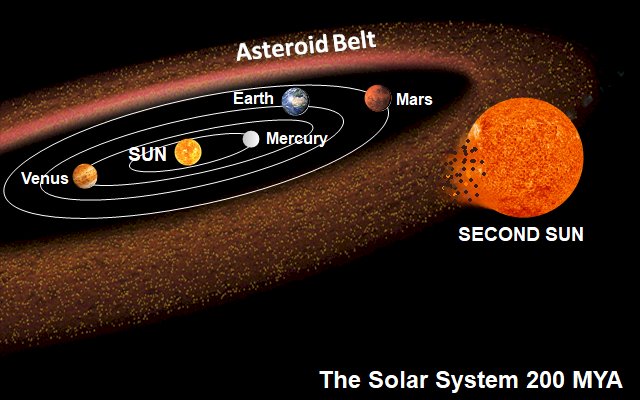
Since it is not possible, with current technologies, to see how stars form inside the so-called "molecular clouds", a group of astronomers from UC Berkeley and Harvard University conducted a survey of all the young stars inside a particular region of space using a radio telescope. They found that the young stars are in pairs and close to each other, whereas the old stars are single:
"The finding: Almost all the binary stars they saw were very young, less than a few hundred thousand years old. Most of the older stars were single, and those that were in binaries were closer together." (popularmechanics.com)
Leaving theories aside, thinking of visible evidence, focusing on concrete observations, knowing that debris disks are created only by dying stars,
and young stars are born in pairs and near each other, the question becomes, where was the place of the
twin star of the sun, rather than: did the sun have a twin

![]()
| What Causes Lightning Strikes? (Published: June 20, 2018) |
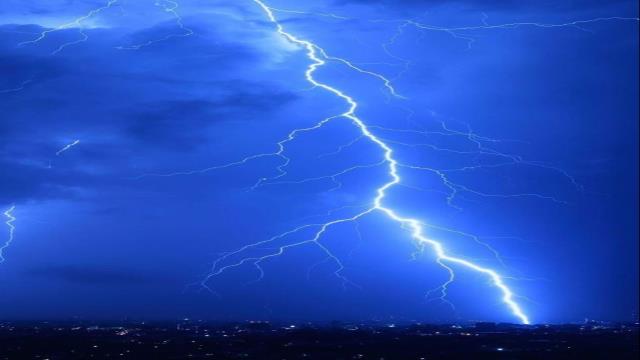 |
|
Last updated: August 16, 2025
We Don't Actually Know What Triggers Lightning Strikes Electricity-charged particles originating from volcanoes on Jupiter's moon Io cause lightning strikes on Earth. The charged particles travel from Jupiter's area into the Earth's upper atmosphere and stay there orbiting the Earth. When there is a thundercloud, they are attracted to particles within it. They strike the thundercloud, penetrating the Earth's atmosphere and causing lightning in the clouds. The developed electrical charge sometimes discharges to the ground when there is an easy path to ground, such as rain or humidity. In rare cases, thunderbolts shoot upwards from a cloud to outside the Earth's atmosphere — Electricity follows the path of least resistance. The stream of particles that struck the clouds first is still there, acting like an electric conductor, so the lightning electricity moved through it, all the way to the place where the conductor ends, the place where the particles that triggered the lightning reside, which is in the ionosphere, a layer of the Earth's upper atmosphere, composed of electrically charged particles (electrons and ions). What causes lightning in volcanic eruptions? "the exact cause of volcanic lightning is still being actively debated." (earthsky.org) The cause must be charged particles coming from underground. They interact with particles in the air, causing volcanic lightning. Once discharged into the surrounding ground or in the air, they will not cause further lightning. So there must be another source of similar particles that cause lightning in clouds. The closest celestial body to Earth from which similar charged particles could come is Jupiter's moon Io, which is the most volcanically active object in the solar system. The moon Io acts as an electric generator that can develop 400,000 volts across itself, and create an electric current of 3 million amperes. (wikipedia.org)
The moon Io was previously the second planet of the second sun.
These five moons are no stones. They are active planets. What makes Io more active than the others is that it experiences strong tidal forces. "The tidal forces experienced by Io are about 20,000 times stronger than the tidal forces Earth experiences due to the Moon" (wikipedia.org) Some of Io volcanoes fire hot gas plumes 300 kilometers into space. (spaceplace.nasa.gov) "Jupiter's magnetosphere ejects streams of high-energy electrons and ions (energy up to tens megaelectronvolts), which travel as far as Earth's orbit." (wikipedia.org) The source of some of the particles transmitted by Jupiter's magnetosphere is the atmosphere of the planet itself, but the source of the most and the highly energized particles is the moon Io:
What is the source of Jupiter's radiation? These Io particles, the high-energy electrons and ions, cause lightning strikes on Earth. Below is a short clip from a YouTube video showing an example of charged particles from a volcano igniting lightning in a cloud. Wild video shows lightning strike hit erupting volcano
A stream of high-energy particles traveled from the volcano to the cloud. Particles inside the cloud were attracted to them. A massive electrical charge formed within the cloud and struck the volcano. The electrical charge from the cloud followed the path of least resistance, which is the stream of particles emerging from the volcano. The massive explosion at the volcano shows that this lightning bolt is not a normal discharge to ground. It is similar to a lightning bolt striking a large power transformer, indicating that the volcano contains a huge amount of electricity. "Initiation of the lightning leader is not well understood. The electric field strength within the thundercloud is not typically large enough to initiate this process by itself. Many hypotheses have been proposed..." (wikipedia.org)
The moon Io, the most powerful power generator, supplies all the electricity needed to produce lightning.
Who knows, there might be a way to obtain free electricity from it
|
![]()
 |
Facebook Timeline |
![]()
Keywords: asteroid belt, solar system second sun, asteroid belt sun, plate tectonics, continental drift, inner planets, earth solar system, expanding earth, earth geology, triassic period, permian triassic extinction event, dinosaurs, rust on Mars, atmosphere of Mars, gas planets, Europa, Io, Callisto, Titan, Ganymede, moons of Jupiter, moons of Saturn, binary star system.
![]()



